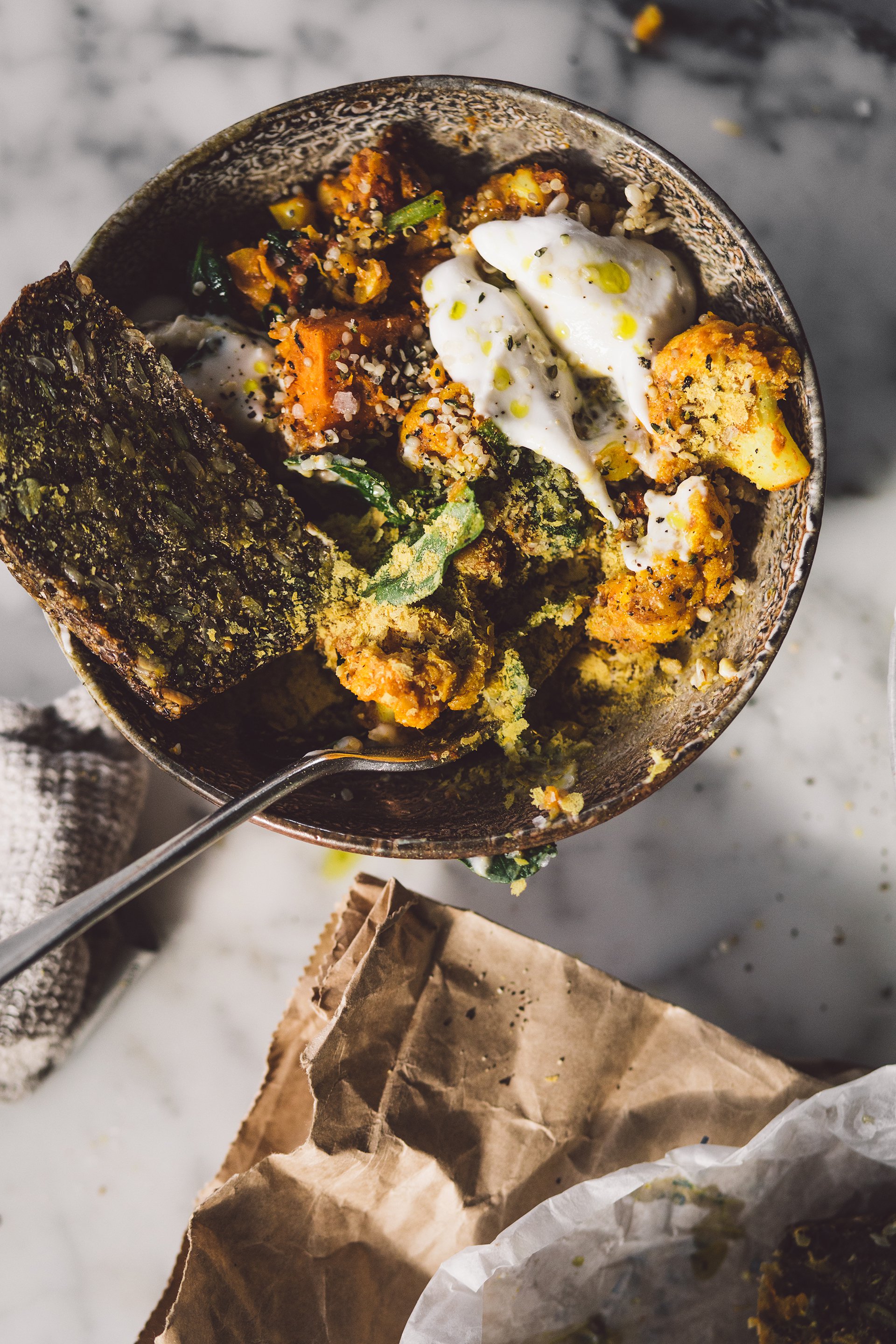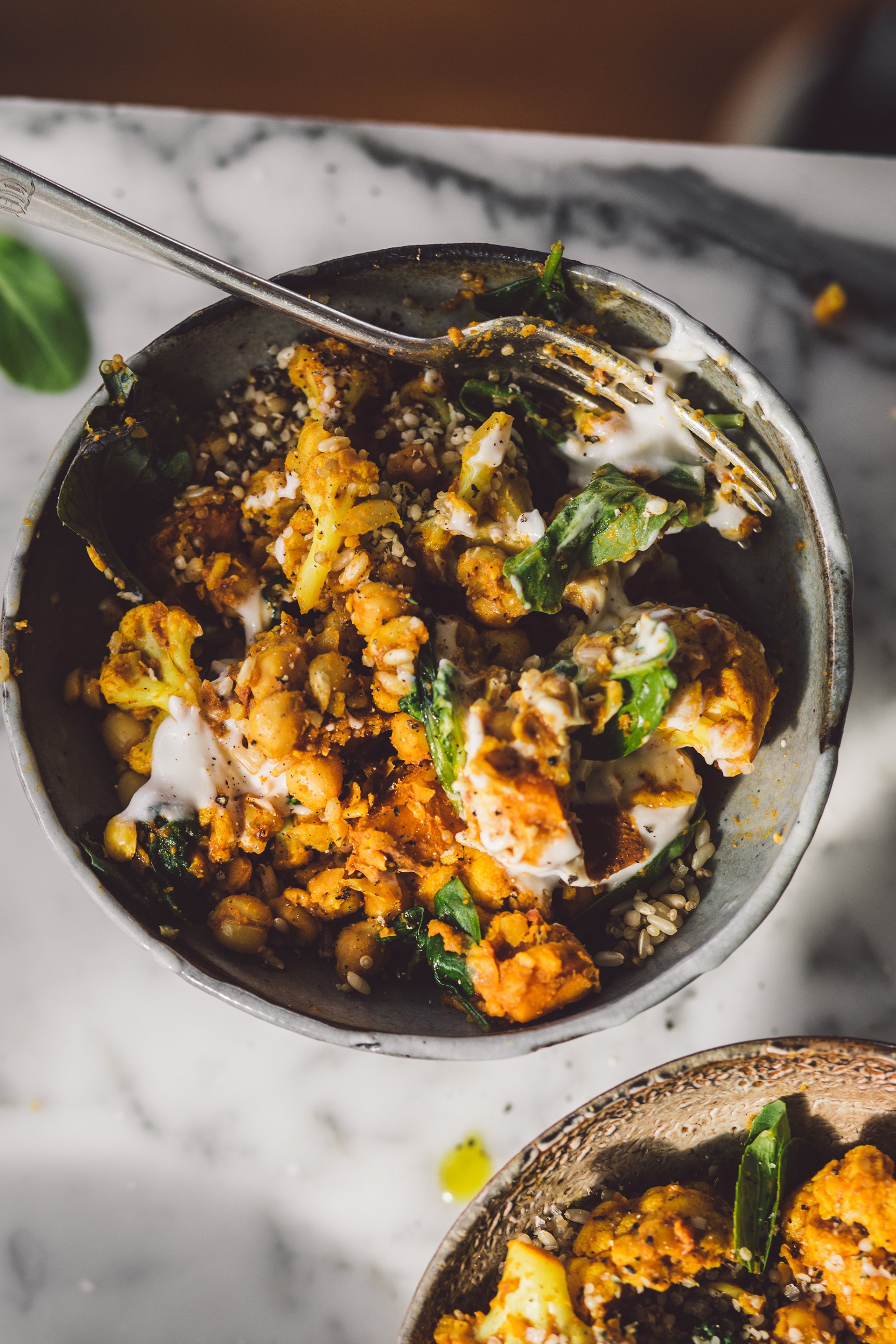Method
Heat a large pot over medium heat with coconut oil. Add the onion and cook for a few minutes until fragrant.
Add the kumara (or pumpkin if using) and cauliflower and cook for another 5 minutes. Stir in the garlic, fresh ginger and remaining spices. Taste and adjust seasoning as required.
Next add the apple cider vinegar, tomatoes, water, coconut milk, and chickpeas. Bring to a low boil, then reduce the heat and simmer for about 30 minutes to achieve a thick curry. Remove from heat, and stir in the spinach.
Meanwhile to cook the quinoa bring 2 cups of water to a boil, add the quinoa reducing heat to a simmer, cover and cook for 15 minutes. After 15 minutes, turn off the heat and let sit for 10 minutes. Fluff with a fork.
Divide quinoa amongst bowls and top with the kumara cauliflower curry and serve immediately.
Store any leftovers in an airtight container in the fridge, they will keep for up to 3 days.
* We soak and cook our legumes from scratch, in batches since it saves time, and they can be utilised in various meals throughout the week. Soak your chickpeas the night before and the next day bring a large pot of water to boil, add the chickpeas (typically they double in volume so 1½ cups of dry chickpeas yield 3 cups cooked), reduce the heat to medium and simmer for 1.5 hours. You will need to check the water level 2-3 times, adding more water to cover the chickpeas to prevent them from sticking to the base of the pot and burning. And if you don’t have any chickpeas on hand use canned, 2 cans equate to 3 cups of cooked chickpeas.




